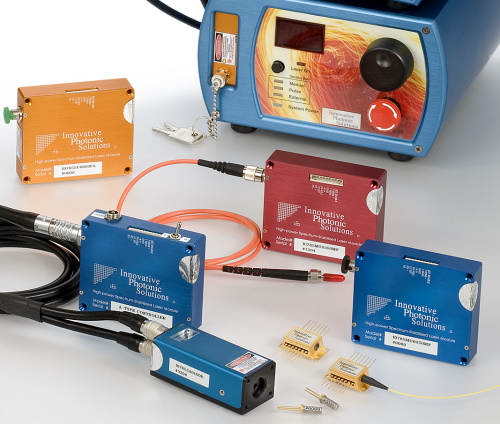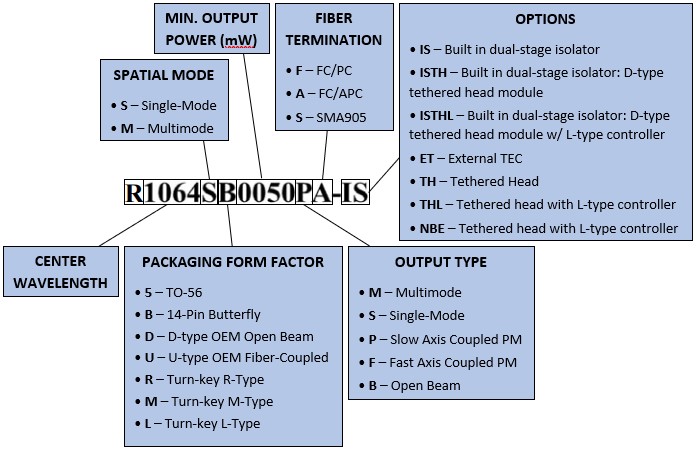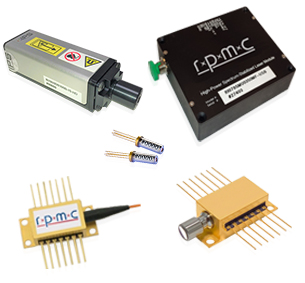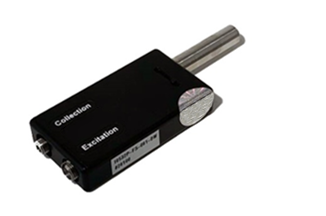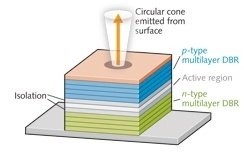R1064.X
Laser Diode, Stabilized, 1064.X nm
Key Features:
- High Power Single Mode (single spatial & SLM) Output
- Ultra-Narrow Spectral Bandwidth (< 100 kHz)
- Stabilized Output Spectrum (< 0.007 nm/0C)
- Excellent Beam Quality (M^2 < 1.1)
There are many configurations and options available. If you do not see exactly what you need below, please contact us!
Need Quantities? Have a question?
POPULAR CONFIGURATIONS:
Picture |
Part Number |
Part Description |
Datasheet |
Price |
Lead Time |
|
|---|---|---|---|---|---|---|
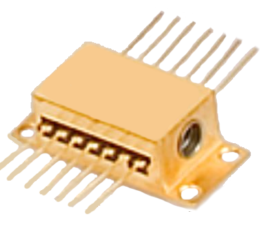
|
R1064.XSB0500B |
Single Mode Laser Diode, 1064.Xnm, 500mW, 14-pin Butterfly Package, Open Beam, Measured in Vacuum |
|
Inquire |
Get Quote | |

|
R1064.XSB0050P-IS |
Single Mode Laser Diode, 1064.Xnm, 50mW, 14-pin Butterfly Package, Fiber Coupled(No Connector) w/ Isolator, Measured in Vacuum |
|
Inquire |
Get Quote | |

|
R1064.XSB0050PA-IS |
Single Mode Laser Diode, 1064.Xnm, 50mW, 14-pin Butterfly Package, Fiber Coupled w/ FC/APC Connector w/ Isolator, measured in vacuum |
|
Inquire |
Get Quote | |

|
R1064.XSB0120P |
Single Mode Laser Diode, 1064.Xnm, 120mW, 14-pin Butterfly Package, Fiber Coupled(No Connector), Measured in Vacuum |
|
Inquire |
Get Quote | |

|
R1064.XSB0120PA |
Single Mode Laser Diode, 1064.Xnm, 120mW, 14-pin Butterfly Package, Fiber Coupled w/ FC/APC Connector, Measured in Vacuum |
|
Inquire |
Get Quote | |

|
R1064.XSB0300P |
Single Mode Laser Diode, 1064.Xnm, 300mW, 14-pin Butterfly Package, Fiber Coupled(No Connector), Measured in Vacuum |
|
Inquire |
Get Quote | |

|
R1064.XSB0300PA |
Single Mode Laser Diode, 1064.Xnm, 300mW, 14-pin Butterfly Package, Fiber Coupled w/ FC/APC Connector, Measured in Vacuum |
|
Inquire |
Get Quote | |
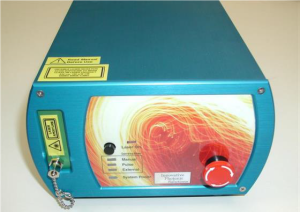
|
R1064.XSL0050PA-IS-USB |
Single Mode L-Type Module, 1064.Xnm, 50mW, FC/APC Connector w/ Isolator, Measured in Vacuum |
|
Inquire |
Get Quote | |
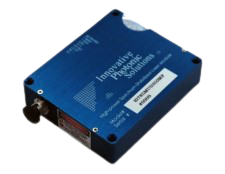
|
R1064.XSU0050PA-IS-USB |
Single Mode U-Type Module, 1064.Xnm, 50mW, FC/APC Connector w/ Isolator, Measured in Vacuum |
|
Inquire |
Get Quote | |

|
R1064.XSU0120PA-USB |
Single Mode U-Type Module, 1064.Xnm, 120mW, FC/APC Connector, Measured in Vacuum |
|
Inquire |
Get Quote | |

|
R1064.XSU0300PA-USB |
Single Mode U-Type Module, 1064.Xnm, 300mW, FC/APC Connector, Measured in Vacuum |
|
Inquire |
Get Quote |
The R series of wavelength-stabilized single-mode and multimode laser diodes offer narrow linewidth output in wavelengths from 633nm thru 1064nm, with output powers up to 5 W. This highly customizable series offers package options ranging from components as basic as a TO-56 or 14-pin BF packaged diodes to OEM modules, including electronics, to UL/CE and IEC-certified turn-key systems. The R series is the perfect source for various markets, including chemical analysis, bio-medical, fiber laser, and scientific applications.
Benefits:
- Product and technology capabilities and applications:
- Our products and technology have enabled the wide-spread use of these compact narrow-linewidth sources for chemical analysis, bio-medical, fiber laser, and scientific markets
- This series specializes in the integration of semiconductor lasers, high-reliability micro-optic packaging, precision control electronics, and digital control for these applications.
- Features and benefits of the HECL technology:
- With IPS’s HECL technology, single-spatial mode lasers spectral bandwidth reduces to a single-frequency, single longitudinal mode that has an extremely narrow linewidth
- The R-Series offers side mode suppression ratios that provide extremely high signal to noise ratio and exhibit highly stable wavelength versus temperature characteristics which eliminates the need for complex control circuitry
- Customization options and additional offerings:
- The R-Series is highly customizable from free-spaced and fiber-coupled units designed for integration to full turnkey systems
- In addition, IPS offers high-throughput Raman probes for both single and dual laser sources. These probes can be configured for different wavelengths, cut-on wavenumbers, input and output fiber core diameters, and spectrometers.
The R1064.X is a 1064 nm precision single-mode wavelength stabilized diode laser. This 14-pin butterfly package utilizes a proprietary hybrid external-cavity laser design based on volume Bragg grating (VBG) technology, to ensure single-frequency laser performance as well as a single-mode beam profile. This laser package is capable of linewidths less than, <100 kHz, when used with an appropriate power supply, at an output power up to 500 mW with power fluctuations of less than 1%. The R1064.0 also provides excellent side mode suppression ratio (SMSR) typically between 35-40 dB, and a polarization extinction ratio greater than 17 dB.
This line of laser diodes can be configured with many different options and package types to fit any application need. Whether you are wanting base TO-56 or 14-Pin Butterfly components, OEM modules, or a fully turn-key package, we have the options to get you exactly what you need and make your project a success! See the Package Options section below for datasheet specifications for each configuration type. Use the datasheets and the part number keys to determine your desired configuration, or talk to one of our knowledgeable Product Managers today for tailored assistance in choosing the right setup for your needs.
If you have any questions or need more information, please contact us.
| Type | |
|---|---|
| Wavelength (nm) | |
| Output power (W) | |
| Mode | |
| Output | |
| Linewidth | |
| Duty | |
| Package | Butterfly – Open Beam, Butterfly FC, U-Type FC Module, H & L-Type Tethered |

 SHIPS TODAY
SHIPS TODAY 